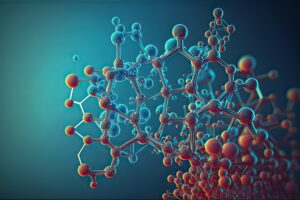
Deep-sea enzymes with a taste for plastic
Canadian Plastics
Materials Research & Development SustainabilityGerman researchers have shown for the first time that polymers such as PET are continuously degraded by an enzyme.

Image Credit: Adobe Stock/pixardi
Any solution to the problem of plastic waste is a welcome one, including PET bottles in oceans and on shorelines.
Which is why it’s good news that a new study by scientists from Kiel University, in Kiel, Germany, has shown that deep-sea enzymes can actually break down the PET.
Until now, approximately 80 PET-degrading enzymes have been found in bacteria or fungi, the researchers state. However, this new study has identified and biochemically described the PET-degrading enzyme PET46 from a non-cultured deep-sea microorganism. This involved identifying the gene from a deep-sea sample based on similarities to known sequences, synthesizing the corresponding coding gene, producing the protein in the bacterium Escherichia coli and then studying it biochemically and structurally. PET46 has many unusual properties and adds to the scaffold diversity of PET-active enzymes. Structurally, the enzyme differs significantly from those previously discovered. For example, it has the ability to degrade both very long-chain PET molecules, known as polymers, and short-chain PET molecules, known as oligomers, which means that degradation can be continuous.
Among other things, the researchers said, PET46 uses a completely different mechanism for substrate binding than previously known PET-degrading enzymes. The researchers describe an unusual “lid” of 45 amino acids above the enzyme’s active centre as crucial for binding. In other PET enzymes, aromatic amino acids close to the active site are typical.
“At the molecular level, PET46 is very similar to another enzyme, ferulic acid esterase,” the researchers said. “This degrades the natural polymer lignin in plant cell walls by breaking down lignin polymers to release sugars from woody plant parts. Lignin and PET have many structural similarities, so the PET-degrading enzymes found in nature may be important for composting wood in forest soils, for example.”
The biochemical properties of PET46 therefore make it a very interesting enzyme both for marine and terrestrial plastics and for biotechnology, they continued. Compared to the best-characterized PET-degrading enzymes from bacteria and composting plants, PET46 is more efficient at 70 °C than these reference enzymes at their respective optimum temperatures.
“The degradation of PET through enzymatic hydrolysis has gained considerable attention as a promising approach to address the global plastic waste crisis,” the researchers said. “Our biochemical results significantly extend the knowledge of PETase enzymes and their biodiversity. Our study further enables the development of an expanded phylogenetic framework for identifying the diversity of putative PET-degrading enzymes in marine microbial groups throughout the global ocean. Finally, the data presented here will help advance our knowledge on the ecological role of the Bathyarchaeota and the possible decomposition of marine PET litter.”
The research was part of the Plastisea project funded by the German Federal Ministry of Education and Research.
